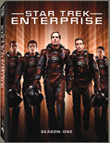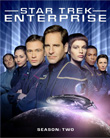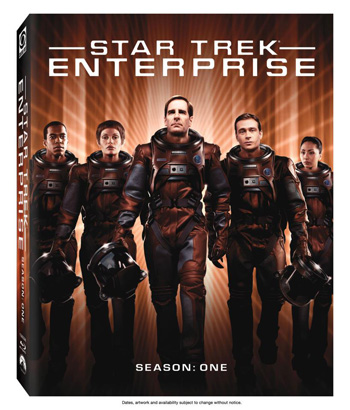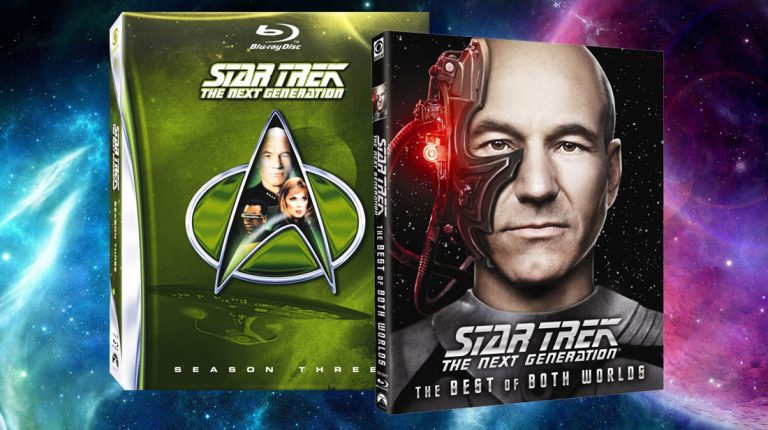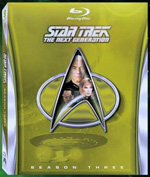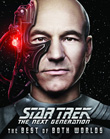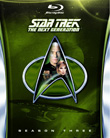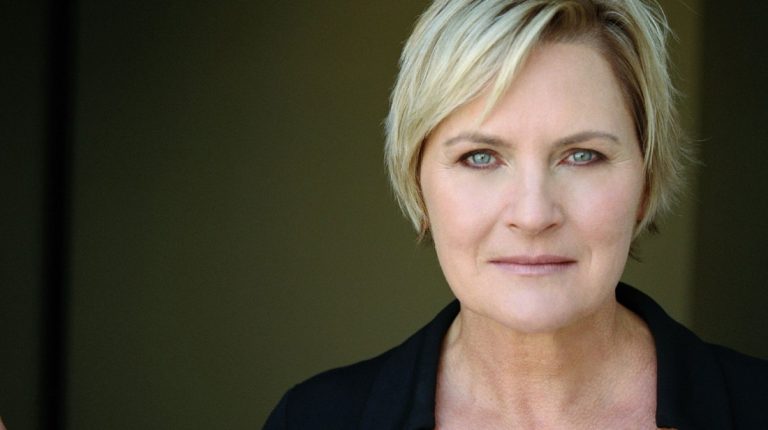TrekCore talks to Robert Meyer Burnett, one-half of the talented duo responsible for the creation of the new bonus features on Star Trek: The Next Generation‘s remastered Blu-Ray releases. Normally to be found beavering away in his edit bay, Rob generously took several hours out of his busy schedule to talk to me about all things Star Trek, answering questions about his work and dropping several juicy hints about the exciting things he and Roger Lay Jr. have planned for future Star Trek Blu-Ray releases.
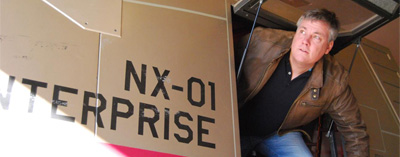
Robert Meyer Burnett: Who Interviews the Interviewer? Part 6
Interviewed by Adam Walker for TrekCore.com
![]()
TrekCore: Sadly, neither you nor Roger were involved with the features on the Original Series Blu-rays. Had you had the chance to manage their production, where would you have gone with the project?
Robert Meyer Burnett: Well, The Original Series is the thing that I’m a most life-long fan of. The Original Series is hard… so much has been written, so much has been covered, and we’ve lost many of the original people that made it. Even if you had them around, it was forty-five years ago – so I don’t know if you could do, if it would even be possible, to go back and look at The Original Series the way we’ve been looking at The Next Generation or the way Roger’s delving into Enterprise. I don’t know. I really don’t know.
What I would have done, had I been able to work on The Original Series… I would have loved to have gotten myself into a consulting position about the new visual effects. I would have loved to have been an overseer. I think Dave Rossi and the Okudas and everybody did as good a job as they could do, but I think what you needed was a director – a filmmaker making certain decisions about, for instance, how the Enterprise moved. Since you’re asking me, what I would have done is: ILM so beautifully, in Star Trek II: The Wrath of Khan, showed us capital ships in starship combat. Even though it has no bearing on physics, or what would really happen when two ships the size of the Enterprise and the Reliant were fighting against each other – it wouldn’t really look like that at all – but in our imaginations, it’s two capital ships fighting the way ships would fight on the high seas, but in three dimensions with an X, Y, and Z axis. The ships were lumbering behemoths, pounding on one another, and they seemed HUGE.
 One of the things that I did not like in the remastering of The Original Series was how fast the Enterprise moved in an episode such as “The Doomsday Machine”. The sense of scale of the Enterprise, and the sense of weight of the Enterprise was just not there, because the Enterprise moves so fast. While the argument can be made that yes, that ships can see each other at all when they’re 200,000 kilometers apart is ridiculous anyway, but apparently they can – but I would have taken a different tactic regarding all of the visual effects and slowed it all up. Made it HEAVY.
One of the things that I did not like in the remastering of The Original Series was how fast the Enterprise moved in an episode such as “The Doomsday Machine”. The sense of scale of the Enterprise, and the sense of weight of the Enterprise was just not there, because the Enterprise moves so fast. While the argument can be made that yes, that ships can see each other at all when they’re 200,000 kilometers apart is ridiculous anyway, but apparently they can – but I would have taken a different tactic regarding all of the visual effects and slowed it all up. Made it HEAVY.
My favorite effects on the redone, remastered Original Series – the show looks great by the way – on episodes like “Court Martial”, when you just see the Enterprise in orbit around the starbase, but you see where the storm damage was done – I love that! That geography was never understood before. Or whenever they actually added to the universe itself, like you’d see a starbase and see shuttlecraft floating around, or in “Amok Time” when you got to see that bit from The Animated Series [the view of ShiKahr on Vulcan, first seen in “Yesteryear”], then you got to see the mountain from Star Trek III… I love that stuff! That stuff was amazing! But some of the starship stuff could’ve been better… but again, they were learning. And they were hampered by time constraints and budget. But still, I wouldn’t have made some of the changes they made, like to the Tholian ships.
TrekCore: Rob, you’re a huge, self-confessed ‘Niner’. With so many fans eyeing Deep Space Nine in high definition – the next logical step for CBS – have you given any thought on how you would go about profiling the series, should you be asked to produce features for it?
Robert Meyer Burnett: I think our approach would be similar to our Next Generation approach – you still have one of the executive producers of the show, who created it, Rick Berman, still around – there would be a lot of interesting questions to ask. Again, that show struggled in the ratings. What I love about the show that it took Star Trek and upgraded it more to the serialized nature of modern television storytelling and it has so many great guest stars and ongoing plotlines… it would just be really interesting to cover it from that perspective. And when Ira Behr took over and just blew it all out of the water.

Rob hopes to take a similar approach with DEEP SPACE NINE as he has with THE NEXT GENERATION should CBS green light the show, albeit with an extra dose of fanboyish admiration.
I think on Deep Space Nine we’d probably be much more of slavish fanboys – for Roger and I both, I think Deep Space Nine is our favorite of the modern Star Trek shows – we’d come at it with less historical reverence, because it’s more of a scrappy show, you know, more of a down-and-dirty show. I would love to approach it that way – and the fact that you can go interview Frank Langella [‘Jaro Essa’ from the Season Two three-part premiere], and you can go interview Louise Fletcher [‘Kai Winn Adami’], and go find all of these people and talk to them about this show would be a lot of fun. The people who worked on Deep Space Nine really loved the show – not that they didn’t love The Next Generation – but it was never the show… Star Trek: Deep Space Nine is the Rodney Dangerfield of Star Trek shows: it doesn’t get any respect, even from the fans – there are a lot of fervent fans that love it – but there’s a lot that don’t. I would like to delve into that.
TrekCore: Let’s hear some candid talk from you about Star Trek: Voyager. It’s often the bastard stepchild of Star Trek, even more so than Enterprise, because it kind of gets forgotten in between all of the other shows. What are your thoughts on it now, looking back? Would you ever want to write VAM for that?
Robert Meyer Burnett: I’ll admit, I liked the first season of Voyager – but here’s what I don’t like about Voyager.
Voyager, to me, is just an amalgamation of Star Trek tropes that are being put through Star Trek stories that we’ve already seen before. Then, in a shameless bid to grab ratings, they co-opted things like the Borg, and ruined them. They added Jeri [Ryan], who turned out to be a great character, but they added her and she was clearly, at least at first, eye candy. Brannon Braga’s obsession with time loops and all that; to me, what Voyager should have been – and maybe you should never criticize something for what it wasn’t, but what it actually was – but I do think that with Voyager, you have a half-alien, half-human in Roxann Dawson’s character (‘B’Elanna Torres’) who is Spock, who is Data, now a cliché. It was just an amalgamation of everything we’d ever seen before on Star Trek, and it didn’t offer much in the way of something being new. That is what I never liked about it.
But it had a great idea – that a starship has been flung to the other side of the galaxy, cut off from its supply line, cut off from any help – but the idea that they were trying to get home, to me, was dumb. Because, theoretically, the only way they’re going to get home is to cheat. They’re going to find some way to cheat, because they’re going to need some propulsion system or some transwarp conduit… Played straight, it would be impossible for them to get home, so that show should have been about Columbus going to the New World, or something, where they were going to take the ideals of the Federation – the idea of the Prime Directive – and try and build a coalition in a part of the galaxy that was full of strife and full of problems and full of conflict; try and world-build how do you build a Federation beachhead in an area of space that isn’t interested while you’re cut off from any other supplies or aid from your homebase. That would have been the show that I would have liked to have seen – it would have been a much different show than we’d ever seen before, and I think it would have been fascinating to watch.

Rob views Star Trek VOYAGER as more of an “amalgamation” of ideas from previous Star Trek series. Episodes like “Year of Hell” stick out to him as particularly gimmicky.
But they didn’t go that way; they just started telling standard Star Trek stories that were, most of the time, rehashes and variations of what we’d already seen on the previous three series. There was nothing new, whereas Deep Space Nine was full of new ideas all the time, and it did really interesting stuff. That’s not to say that when I catch random episodes of Voyager, I don’t catch episodes that I like. I’ll watch individual episodes, and now I’m not so vehemently against it the way I used to be… but it just seems to me that it was the copycat Star Trek show. I know that there’s a lot… again, if Voyager was the very first Star Trek show you came to and you started watching it when you were young – also, I know that there’s a lot of women like Mary Czerwinski, who’s done a lot of work for Creation and Roddenberry.com, who adore the show. So I know – if you were female and came to Star Trek because of Voyager, there are a lot of – beginning with Kathryn Janeway – a lot of really strong female characters. Kes, Seven of Nine, all these characters… there’s a lot of strong female characters on that show, and I can see… and Roxann Dawson became a director! She started directing because of that show. I don’t begrudge people who came to Star Trek for the first time because of Voyager, but I think that Voyager is just so gimmicky, like, let’s do “Year of Hell”, let’s go back to Earth in the 20th Century [“Future’s End”], but then hit the reset button, so nothing which happened really mattered; I hated that. Also, everything, to me, was just shamelessly gimmicky all the time. Plus, the Kazon were lame, the Phage was stupid… I didn’t like it. And Janeway’s command decisions were usually incredibly suspect.
TrekCore: You could, arguably, describe another gimmick, in the form of Star Trek: The Animated Series, which is probably one of the most forgotten chapters of Star Trek. Many fans just accuse it of being a poor imitation of The Original Series; an attempt to cash in on the glory of it. What are your views on The Animated Series?
Robert Meyer Burnett: I love The Animated Series, because to me – despite the very limited animation and some of the lethargy on display from some of the voice acting, and James Doohan doing every other alien voice – there are some great episodes of The Animated Series. Episodes that I really like written by Original Series writers, whether it’s “Yesteryear” being case in point; “Albatross” and “Bem”, “How Sharper than a Serpent’s Tooth” and “The Counter-Clock Incident” and “Jihad” – there are a lot of really interesting stories there that I think are really legitimate. There are plans afoot to bring The Animated Series to Blu-ray, and I have an idea that would be crazy to pull off, but if we could it would be really interesting – I like The Animated Series a great deal, despite its shortcomings. Again, I think there are some great storylines; “Slaver Weapon” with the Kzinti…
I hated that Gene Roddenberry said it wasn’t canon when you had David Gerrold, Dorothy Fontana, and Gene and a lot of other writers from the original show; so why would you say that? It was done as an animated show; it won two Daytime Emmys, didn’t it? It was great! The final two years of the five year mission!

Burnett looks on the ANIMATED SERIES as an extension of the ORIGINAL SERIES and reveals that plans are afoot at CBS for a Blu-Ray release of the series.
TrekCore: You are probably one of the more outspoken critics on J.J. Abrams’ version ofStar Trek. Where do you think that departs from the Star Trek you know and loved from Gene Roddenberry’s spark, and how would you put it back on track?
Robert Meyer Burnett: Well, here’s the thing that I try to explain to people. As a life-long Star Trek fan, when Star Trek: The Motion Picture came out, one of the revelatory things for me – as a twelve-year-old who watched the show for almost a decade, who’d poured all over the blueprints, read all the novels; I lived and breathed in my imagination the Star Trek universe – when Star Trek: The Motion Picture came out and I saw the design of the new Enterprise, which you could tell was bad-ass, it was souped up, but it all made sense. When you looked at it, you were all like, “Oh, okay, that’s an extrapolation of the design, it looks cooler. Faster. More powerful. And very, very sexy…”
But when you saw the interior – this is what blew my mind the most – when you saw the interior of the refit Enterprise, with the blue-and-red impulse dome, and the impulse engines you knew so well, and how they related to the rest of the Engineering section, how the intermix chamber came down from that impulse dome, went into the Engineering deck that was below the impulse engines, and how you saw that same intermix chamber snake back through the length of the secondary hull to where it went into the different warp nacelle struts… when you saw that, you realized that the entire internal makeup, the internal design of the Enterprise had been incredibly well thought out. You looked and that and just thought, “Oh my god!” One could never understand the relationship between the warp drive and the impulse engines in The Original Series, because the Engineering set in The Original Series was located behind the impulse engines. So…how did that work with the warp drive? It never made sense to me; you never really got it. But with Star Trek: The Motion Picture, you finally saw how everything related, and the Star Trek universe was extrapolated upon in such a gorgeous way across the board – from Starfleet Headquarters to the Epsilon IX station to the Klingon battle cruisers; That first glimpse inside of the [Klingon] bridge, with the moving tactical displays, I nearly lost my mind. We’d never seen that before, other than the brief glimpse behind Subcommander Tal in “The Enterprise Incident.” But we finally saw this with The Motion Picture. For me, as a Star Trek fan, the imagination and the thought that was on display in that movie – of the Star Trek universe itself – was wondrous.
One of the things about the Abrams Star Trek that irked me to no end is how they just haphazardly put into that movie whatever they particularly wanted. Like, J.J. Abrams wanted the image of a young James Kirk driving up on the ground, seeing the Starfleet shipyards as the Enterprise was being built, and then seeing his future. He wanted that image, and you know what? As a director myself, I get that. I think that’s great, J.J. – however, the actual design of the Starship Enterprise, from its very inception back into the Sixties, came from the very real scientific idea a ship the size of the Enterprise COULD ONLY BE BUILT IN ORBIT, because of its sheer size. That’s a very scientific, real world concept based on the laws of physics. Components would be built on Earth, then assembled in orbit. You would not build a starship that looked like the Enterprise, with that configuration, with small struts holding up massive warp nacelles, if you had to build it on the ground and figure out a way to put it in orbit. You wouldn’t do it! The energy expenditure it would take to lift up something like a starship from the surface of the Earth and put it in orbit, into space, you couldn’t do it. It wouldn’t make sense, even if you had the technology to do it, because the ship would not be configured that way – so when they put the Enterprise on the Earth simply for that “classic” image, to me, what it said was the filmmakers were throwing out 45 years of all of the imaginative Star Trek design work for one single image. In the theater, I felt I was seeing someone say to me personally, “Fuck all that. I want an image of this starship on Earth so somebody can ride up on a motorcycle and see it and look at his future.”

One of the scenes which Robert Meyer Burnett takes particular exception to in J.J. Abrams’ new Star Trek movie shows Kirk approaching the Enterprise on his motorbike to see it being constructed.
I’m sorry, but the Starship Enterprise was simply not built on a planet. It just wasn’t. One of the constraints of the Star Trek universe is the Enterprise was built in space. That’s the design of that ship. It just was! Now, you can sit there and go, “Well, I didn’t want it to be that way.” But that’s always been the design of that ship; it’s as much as Spock having pointed ears. By putting it on the planet Earth… I was just like, okay, the thought behind the design work – it was just people saying, “Well, the practicality of all this, we’re going to throw it out the window.” My thinking would be…the screenwriters and Mr. Abrams should’ve figured out a really interesting 23rd CENTURY way to show that same image of Kirk seeing the ship for the first time. Riding up on a motorcycle and looking off into the future is just not very interesting.
To me, that same thinking permeated the rest of the film. They used narrative shortcuts and previously established cinematic imagery to convey information. So, why, exactly, is James Kirk a troubled young man in the J.J. Abrams movie? We never see a scene with the young James Kirk having something that happens to him directly that turns him into a troubled young man – sure, we’re given this shorthand scene where he steals a car, drives off a cliff, and that, inexplicably to me, the audience goes “Oh, he’s a rebel.” Well, is he? We don’t know; why is he a rebel? His father’s not around because he sacrificed his life so Kirk could live. That shouldn’t make you troubled. Then you have an obligatory scene inside a bar where the townies get into a fight with the Starfleet Academy boys. That is a generic scene from a hundred other movies. “But let’s put it in a Star Trek movie where it will be in the 23rd century!” There was nothing in that scene that was clever or had a 23rd Century twist; it was a bar fight scene that we’ve seen in movies back to the dawn of cinema. It is not a great Star Trek scene; it is not an interesting variation on the bar fight scene; it turns Starfleet Academy members, or young cadets, into ogres and oafs… “You’re talkin’ to my girl? Well, let’s get into a fight!” I mean, we’ve seen that scene in a hundred other movies; it is the most uncreative, shorthand bullshit storytelling method ever.
Throughout that entire movie… I will say this, to give them credit; I did enjoy the young Spock stuff on Vulcan, I thought that was great. The rest of the storytelling, to me, was – while the filmmaking was fine, there was some brilliant filmmaking on display; the acting was great, I love the characters and I thought the casting was impeccable – but to me, the storytelling was just generic and subpar. It did not create a believable ‘reality’ to me. The universe of J.J. Abrams’ Star Trek movie is not ‘real’ the way the original Star Trek and The Next Generation and Deep Space Nine and Voyager – and even Enterprise – were ‘real’. You cannot give a third-year cadet on academic probation the captaincy of a starship. In what universe would you ever do that? He’s had one mission – admittedly, he saved the Earth; of course, Vulcan was destroyed – I mean, what does he know about first contact missions? What does he know about interacting with an entire starship crew – I mean, the original Star Trek, when you met Captain Kirk, you got through various episode back stories he’d served for years and years before he became captain.
I understand what they were doing, and the movie made a lot of money, but to me, it did not create a believable universe – the way Star Wars created a believable universe, the way Alien created a believable universe – that new Star Trek movie was generic pablum that appealed to the masses. But, to be fair, that was exactly what it was designed to do. The greatest thing about it – I will say this – it made a lot of money, it brought the franchise back from the dead, and now new Star Trek is viable and lucrative; people are going back and rediscovering the original show, which is really the most important thing. I just wish it were a lot more intelligent.
***
ROBERT MEYER BURNETT wrote and directed FREE ENTERPRISE and produced Warner Premiere and Dark Castle’s THE HILLS RUN RED.
 | Order Star Trek: The Next Generation Season 1 Blu-Ray today! |  | Order Star Trek: The Next Generation Season 2 Blu-Ray today! |
|---|

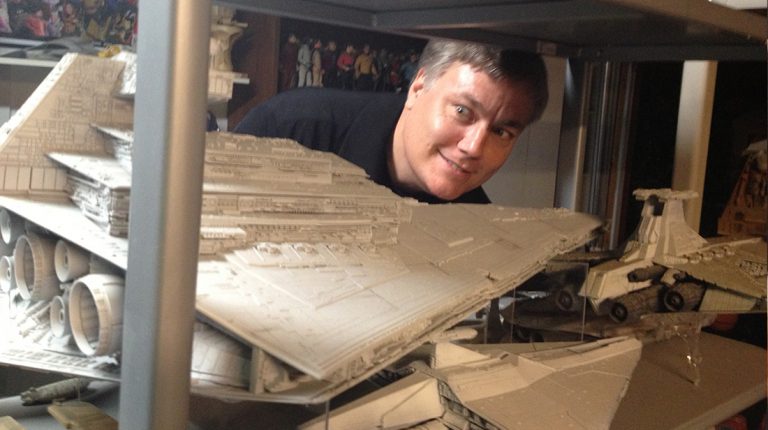
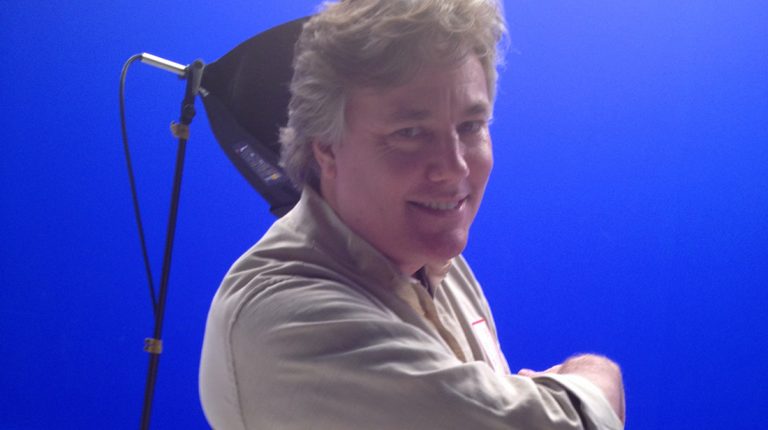
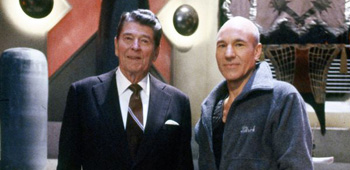


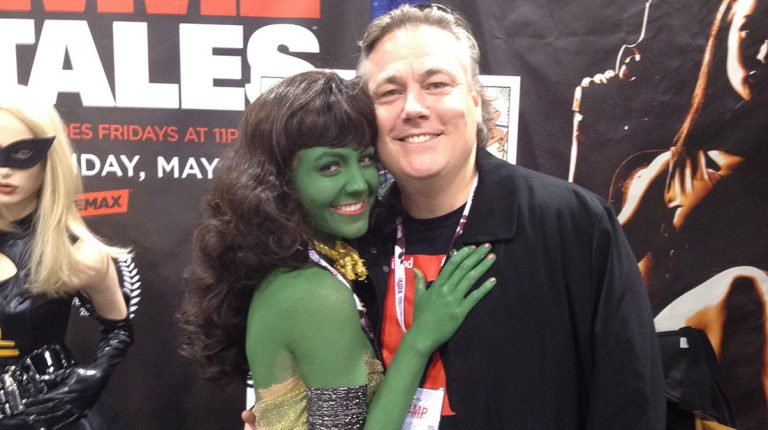

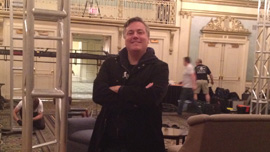


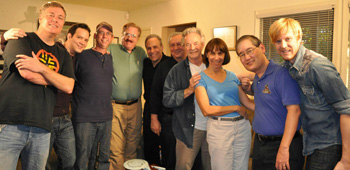
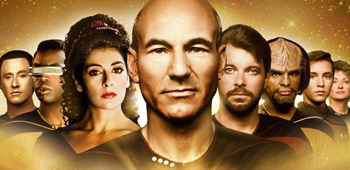
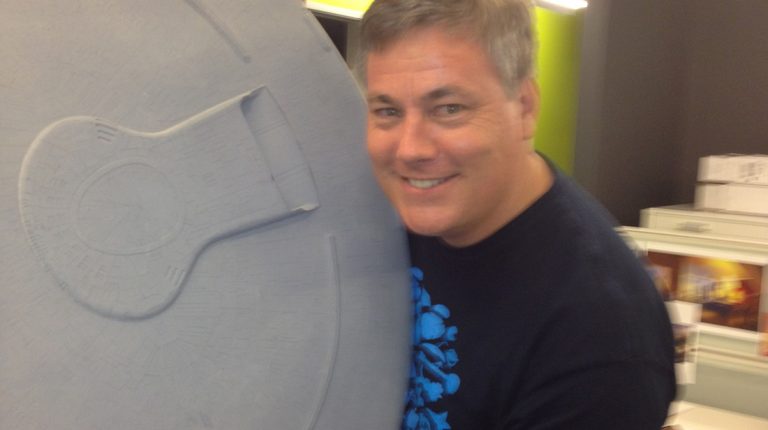
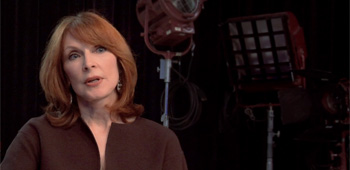
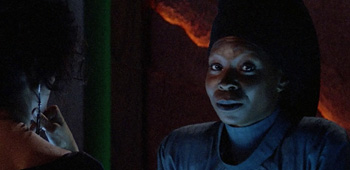

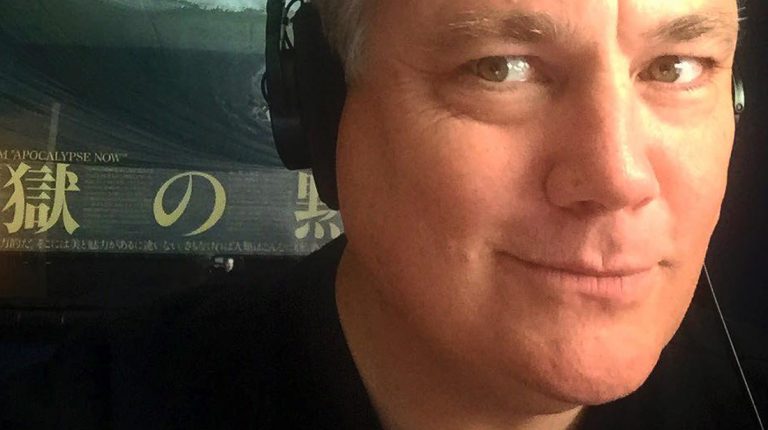
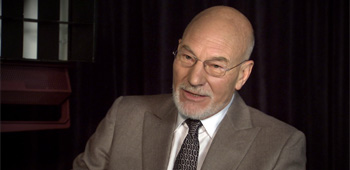

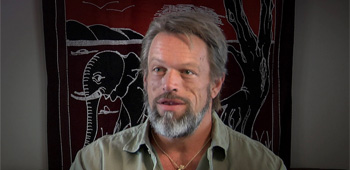
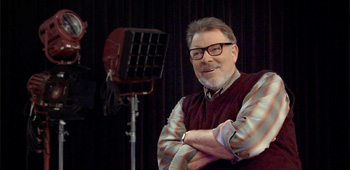


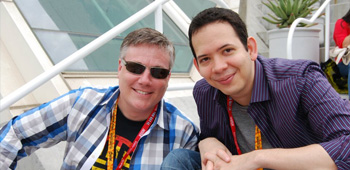

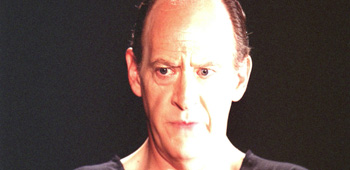
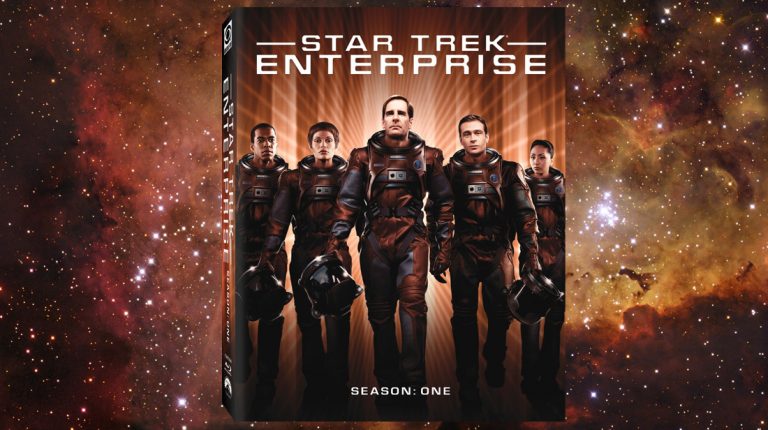
 The STAR TREK: ENTERPRISE—THE COMPLETE FIRST SEASON Blu-ray boasts brand new bonus features including a multi-part, retrospective documentary called “To Boldly Go: Launching Enterprise” that gives fans an inside look at the development and production of the series and is exclusive to this collection. The documentary features interviews with the show’s cast and crew, some of which were shot as recently as December 2012, as well as archival footage and behind-the-scenes clips. The documentary includes:
The STAR TREK: ENTERPRISE—THE COMPLETE FIRST SEASON Blu-ray boasts brand new bonus features including a multi-part, retrospective documentary called “To Boldly Go: Launching Enterprise” that gives fans an inside look at the development and production of the series and is exclusive to this collection. The documentary features interviews with the show’s cast and crew, some of which were shot as recently as December 2012, as well as archival footage and behind-the-scenes clips. The documentary includes: